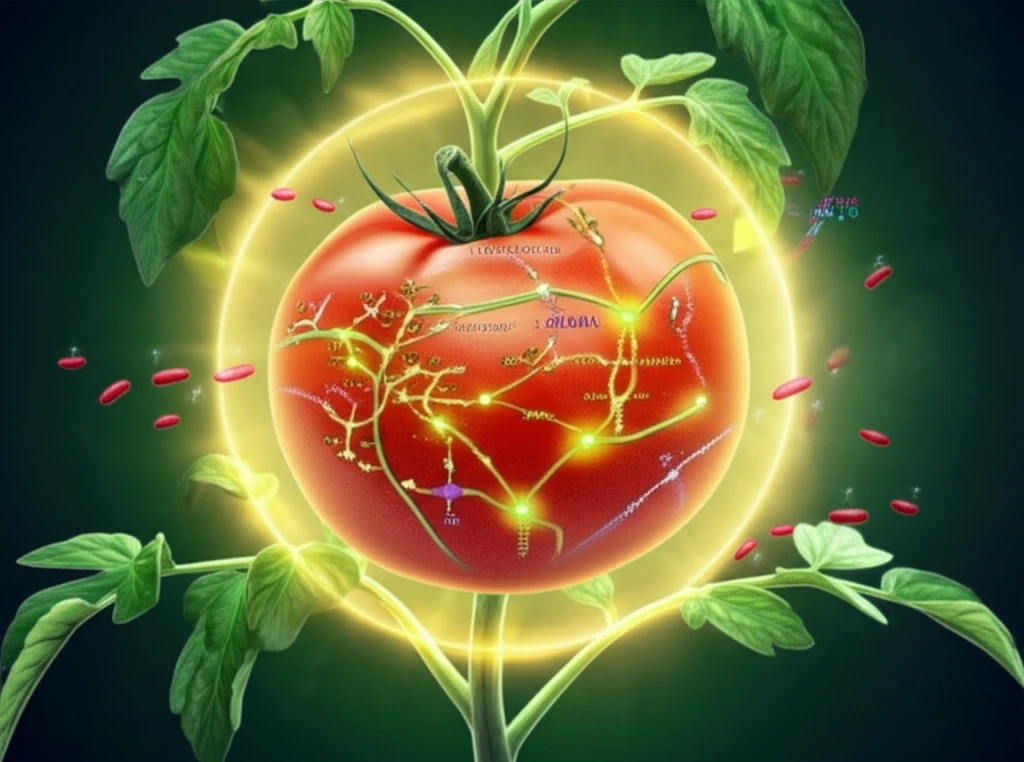
Tomato's Secret Weapon: How Boosting Natural Defenses Fights Bacterial Wilt
"Unlocking the genetic potential of tomatoes to resist Ralstonia solanacearum through methionine and GABA pathways."
Bacterial wilt, caused by the pathogen Ralstonia solanacearum, poses a significant threat to tomato crops worldwide, leading to substantial economic losses. This devastating disease affects over 200 plant species, making it a persistent challenge for farmers.
The quest for resilient tomato varieties has led scientists to investigate the intricate interactions between the plant and the pathogen. A recent study published in The Plant Journal has uncovered a fascinating link between tomato's natural defenses and two key metabolic pathways: the methionine cycle and the y-aminobutyric acid (GABA) biosynthesis pathway.
This article explores these groundbreaking findings, explaining how manipulating these metabolic pathways could unlock new strategies for enhancing tomato resistance to bacterial wilt. This approach could lead to more sustainable and eco-friendly agricultural practices.
Decoding Tomato's Metabolic Defense System Against Bacterial Wilt

The study began with a detailed proteomic analysis, comparing tomato stems infected with highly aggressive (RsH) and mildly aggressive (RsM) strains of R. solanacearum. Researchers observed significant changes in protein expression related to the methionine cycle (MTC) and the downregulation of y-aminobutyric acid (GABA) biosynthesis in infected plants. This initial observation suggested that these pathways play a crucial role in the plant's response to the pathogen.
- SAMS2, SAHH1, MSI (involved in the methionine cycle)
- GAD2 and SSADHI (involved in GABA biosynthesis)
Future Implications: A New Era of Disease-Resistant Crops
This research provides a solid foundation for developing targeted strategies to improve tomato resistance to bacterial wilt. By manipulating the methionine cycle and GABA biosynthesis, scientists can potentially enhance the plant's natural defenses, reducing the need for chemical interventions.
The proteomic and transcriptomic data offer valuable insights into the complex interactions between R. solanacearum and tomato plants. These findings open new avenues for breeding programs, focusing on selecting and enhancing desirable traits related to MTC and GABA pathways.
Ultimately, this research contributes to a more sustainable and resilient agricultural system, ensuring a stable supply of tomatoes in the face of persistent disease challenges. This approach may be applicable to other crops and diseases, ushering in a new era of disease-resistant agriculture.
